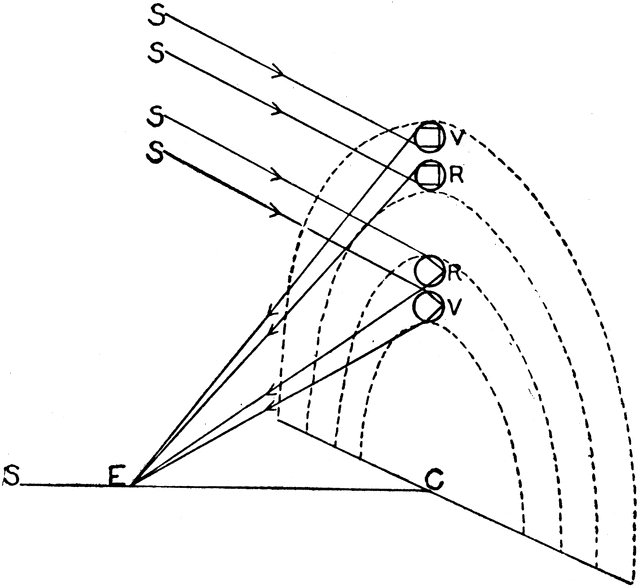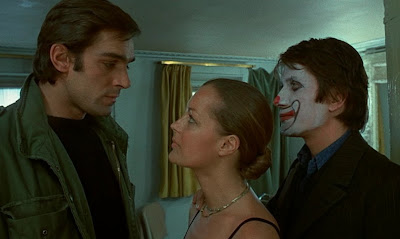"Torture porn" is a derogatory term recently in vogue for describing the genre of cinema which is exploitative and centers upon the graphic depiction of torture.
What is the appeal of such a genre? Why would anyone, presumably with enjoyment, watch a movie valued (solely) for its depiction of torture?
The answer is the human condition.
Torture porn is rightly compared to porn, for both are instance of "exploitation" cinema, where exploitation here is characterized by a value measured solely in the depiction of some particular subject, not by more abstract measures of cinematic value (story, acting, dialog, etc.).
Shakespeare, for example, is the sheer antithesis of "exploitation" in this sense precisely because, even during his most ludicrous comedies, bloody tragedies, or ass-kissing historical plays, the value of the play (as we cherish it today) does not depend upon the depiction of farcical situations / violence / fawning political commentary, but upon the clever dialog and subtle characterization.
Porn is the most famous exploitation genre, exploiting the act of sex, but it depends no less single-mindedly upon the mere depiction of sex than, say, martial arts movies depend upon the depiction of a certain style of violence, westerns on a certain setting and aesthetic, horror upon creation of a certain type of suspense, etc.
So, "torture porn" is justly named, it is indeed the valuing of the mere depiction of violent acts of torture against other human beings over and above plot / dialog / characterization / production value / etc.
But why? What is the appeal, and, empirically, given its existence as a profitable genre for decades, there is appeal, of torture porn? What drives people to watch it? In what sense do they enjoy it?
Here, a compelling answer is found in the culture which is perhaps the greatest consumer (and producer) of torture porn: Japan. The 1976 film Shogun's Sadism, also called The Joy of Torture 2: Oxen Split Torturing begins with this quote:
'The weak become the victim of the strong,' is a rule of mankind. Cruelties have been inflicted everywhere since time began.
How true this observation is! But let us be careful. Let us not be swayed by utopian dreams of an equal society, where every individual is equivalent in power to another and there are no "weak" and "strong." Politically, such a situation has never been realized. Even attempts (one thinks: Soviet Union, North Korea, China, Cuba) to establish a communal society universally fail. No matter what, strong and weak separate, communities organize themselves into a hierarchy on the basis of power.
This is no less true at smaller or larger scales. Just as nations economically bully each other into engaging in particular international policies, so smaller groups (a class in elementary school, a university department, a band, a pair of lovers) inevitably establish structures of power, control, and thus hierarchy. Of course, at smaller scales, there is much more room for give and take, for the possibility of some kind of equivalence, even if it is only represented by a regular alteration in the relative positions of power.
As Baudelaire observed:
[L]ove is very like a torture or a surgical operation. But this idea can still be more bitterly expressed. Even though a pair of lovers may be deeply devoted, full of mutual desires, one of them will always be calmer, or less obsessed, than the other. He or she must be the surgeon or torturer; the other the patient or victim.
No accident that he characterized love as a "[d]readful game, in which one of the players must lose his or her self-government," for "government" in every sense is a position of power, of control. And the inherently hierarchical structure of human interactions necessitates the abandonment of (self-)government.
Torture is the purest realization of that aspect of love which mirrors the general structure of society as a whole; the necessary preconditions of the organized interaction amongst those who, without interaction, would otherwise be equals.
So, the existence of torture is the fundamental precondition for human society.
(Surely, this has already been remarked upon by Bataille?)
But this does not explain the appeal of "torture porn" the movie genre. For if it is indeed a precondition of social interaction, if it does indeed permeate every moment of our human existence, what pleasure then is to be derived from the single-minded fictional depiction of torture? What pleasure derived from the externalization, the graphical and physiological depiction, of an inherently internal and counterfactual social dynamic. "Torture porn" makes that which exists at the level of possibility, of control, of what can be achieved, visible, visceral, and ineluctable.
Here, the crucial answer is to be found in the attitude of the cinema goer to his or her positions within the many overlapping social hierarchies in which she / he participates.
Those who are resigned to their position or those who are satisfied with it, will not enjoy "torture porn."
"Torture porn" is a genre of the disenfranchised, the dissatisfied, those who desire a change (a radical, violent change) in social position. Furthermore, this desire for change must be intimately intertwined with some (subconscious? / conscious?) understanding of their social standing and a realization (even mere gut "grasping") of the relationship between their state of mind (happiness, or lack thereof, etc.) and their position within this social hierarchy.
And here, the ostensibly value-neutral flavor of this essay must end.
For, desiring a position of greater power precisely so that one might wield that power is surely morally reprehensible. To wish to dominate in principle, so one might also dominate in practice, is to succumb to sadism, evil, and the very corrupting influences of power which motivate the drive towards equality as a regulative ideal in the first place.
So, yes, the lover of torture porn may be evil.
(A Japanese example, one picked at random amongst many: Tsutomu Miyazaki.)
But this is not the only human drive which might motivate an "enjoyment" of "torture porn." And this precisely is the point, and why "torture porn" as a derogatory term is indeed unjustified, why the assumption that those who do "enjoy" it are necessarily monsters is, in fact, the true position of evil. The position assumed by the sadist, the torturer, the pervert.
For the desire to be a part of hierarchical change may be motivated not by inherent cruelty, but by pain, victimization, the realization that the lack of power one holds over one's life, that impotence, is an unfair and undesirable state. One might identify in torture porn not with the torturer, but the torturee. And not out of some misplaced (masochistic) sexual dynamic, but out of pure empathy.
For we all are tortured in this life, and to see a graphic analogical depiction of the that very whimsical "torture" to which we are every moment subject may have a profound power of catharsis.
Thus, so-called "torture porn" may be a positive force for healing, for self-realization, for release, understanding, acceptance, but also a constructive release of tension.
And this is why the critiques of Mel Gibson's Passion as mere "torture porn" are so ignorant and woefully misplaced. For this is indeed the role that the story of the passion of Christ as a mythology has always played—a role of catharsis for those subjugated by the (inevitable and universal) power structure of society. This is precisely why the story achieved the religious power it has, why it continues to be spread amongst oppressed peoples, why we see it as a positive and uplifting story. To focus on the pain of Christ is to focus on the plight of those who are not at the top of the hierarchy, of those who are subjugated, controlled, "tortured" by those with more power. That just is the religious significance of the story. That just is why it is a story about love and faith and healing and positive change for a better world.
Christ without the sacrifice would be Marx, Stalin, Castro—he would be the faux-torturee, a mere fascist, a dictator, a torturer.
What about those who identify with the torturer because they long for social change? Those who wish not to be subjugated, not merely so they can subjugate (as the serial killer or the sociopath), but so they can reap justice. Should we condone—must we condemn—those who revel in the possibility of retribution when they watch "torture porn"?
This is in many respects the predicament of Alex, who identifies with the Romans when hearing bible stories, yet whose apparently nihilistic rampages are clearly motivated to some large degree by his position of soci-economic impotence within society. His sadism amongst his droogs is precisely mirrored by the ease with which the larger political structure of society bends and controls him. Howsoevermuch we may revile him for his deeds, what are we to think of the casual manner in which his very personhood is violated against his will by grander, and indifferent social forces. Alex's cruelty is a faint reflection of that cruelty and control to which he is potentially subject by his very place within society and to which he becomes actually subject in the conceit of A Clockwork Orange.
Insofar as retribution may be just, the viewer of torture porn may identify with the torturer in clear conscience. And you, who are resigned, complicit, or who yourself inflict that social torture which he thereby escapes, have no moral standing for criticism.
But insofar as the justice of retribution depends upon a constructive drive towards the regulative ideal of equality, the identification with torturer should be tempered by an identification with torturee, for otherwise the pendulum will swing too far, the desire to supplant the inherent injustice of the hierarchical structure of social interactions will be replaced by a mere lust to occupy the domineering position in such interactions, and the altrustic communistic ideal will curdle into fascism, as it always has in political practice.
"Torture porn" then is indeed technically porn. But it is also religious text, a potential for catharsis and for the recognition of and rebellion against that very order of society which itself ensures, institutes, and institutionalizes torture.

























